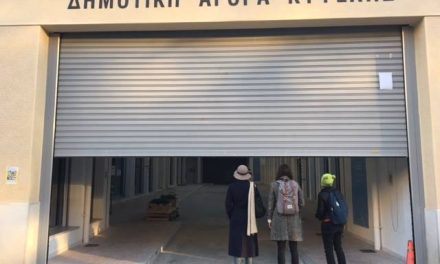Last month, the Greek Parliament approved with a wide majority the deal for the sale and long-term lease of the old airport of Hellenikon in southern Athens. The story goes back to 2014 when Lamda Development SA signed a contract with the Hellenic Republic Asset Development Fund (HRADF) for the acquisition of the shares of the “Hellinikon SA”. Then, Greece’s new government renegotiated with the developers and a Memorandum of Understanding (MoU) was signed, in June 2016, amending the terms of the existing sale and long-term lease agreement (that dated from November 2014) and gaining a better deal that will see more green, less concrete, better infrastructure, faster investment and a larger set of social responsibilities set for the developer.
The Investment is expected to transform the plot of the former Hellinikon Airport into the largest privately funded investment ever in Greece. Specifically, Lamda Development SA is planning to invest approximately 1.5 billion euro on roads and other infrastructure as well as an additional 5.5 billion euro on the construction of 8,000 homes, hotels, shops and a metropolitan park.
A report titled “The economic impact of the development of the Hellinikon area” that was published by the Foundation for Economic and Industrial Research (IOBE) in September 2016, assesses the impact of developing the area of Hellinikon on the Greek economy, by analyzing the effect both in the wider renovation area (microeconomic impact) and on the Greek economy overall (macroeconomic impact).
For the period under investigation (2016-2041), the report foresees that the project is expected to bring to the State 14.1 billion euro in tax revenues overall, that is €563 million per year on average. Moreover, the GDP of the Greek economy is expected to be higher by €7.42 billion (2.4%), compared with the GDP level under the no-investment scenario. In employment terms, the number of employees is expected to exceed 25,000 people in the mid-2030s. In the following years, with the gradual conclusion of the construction activity, but also with more business activities in full operation, the number of jobs maintained in the area on an annual basis is estimated at about 21,000.
 The report also indicates that shopping centers and offices (76%), recreational activities (12%) and hotel facilities (7%) will account for the largest part of revenue over the 25-year period. Furthermore, its conference center, health and educational facilities, casino and marina will utilize the country’s skilled human resources and enhance the demand for alternative forms of tourism. However, the extent to which the microeconomic benefits from the operation of the facilities will contribute fully to the overall economy, or substitute in part existing activity elsewhere, will ultimately depend on whether the facilities will attract visitors who would have otherwise preferred to go to other destinations abroad.
The report also indicates that shopping centers and offices (76%), recreational activities (12%) and hotel facilities (7%) will account for the largest part of revenue over the 25-year period. Furthermore, its conference center, health and educational facilities, casino and marina will utilize the country’s skilled human resources and enhance the demand for alternative forms of tourism. However, the extent to which the microeconomic benefits from the operation of the facilities will contribute fully to the overall economy, or substitute in part existing activity elsewhere, will ultimately depend on whether the facilities will attract visitors who would have otherwise preferred to go to other destinations abroad.
According to IOBE’s estimations, the project is also expected to contribute to the sustainability of public debt, since the investment plan boosts not only the primary surplus, but also the nominal GDP – both of these factors drive down the debt-to-GDP ratio.
Therefore, the report concludes that the Hellinikon project is expected to strengthen the growth rate of the Greek economy, to contribute to its fiscal consolidation and to reduce its public debt. In addition, it is expected to have a significant contribution to the overall advancement of the cultural life, tourism infrastructure and environmental protection in the Attica region. Last but not least, the development of the area could send a strong signal that Greece is a safe and attractive investment destination.
Read also: Full text of IOBE’s study (in Greek); Greece OK’s Big Investment Deal for Europe’s Largest Urban Park in Athens (GNA)
Watch video: 2016: HELLINIKON Project – A new era for Greece
TAGS: CRISIS | DIASPORA | ECONOMY & DEVELOPMENT | ENVIRONMENT | INTERNATIONAL RELATIONS | RECOVERY | REFORMS














